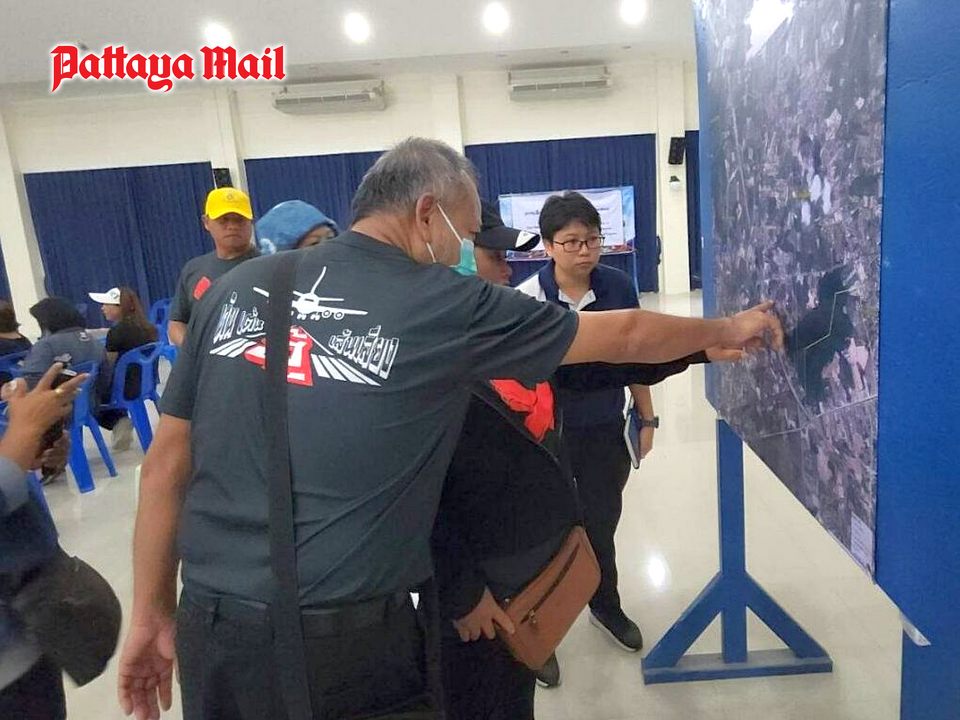
RAYONG-PATTAYA, Thailand – Residents of Ban Chang district in Rayong Province have vehemently opposed the expansion plans for the U-Tapao Rayong-Pattaya International Airport, voicing their concerns during a meeting convened on March 13 at the District Chief Officer’s meeting hall, which drew a significant turnout of affected villagers and key officials.
Organized by the Eastern Economic Corridor (EEC) Policy Committee, the meeting aimed to provide clarity on the background, scope, and survey procedures of the expansion project’s first phase, which involves conducting surveys, preparing compensation accounts, and negotiating compensation for those impacted by the construction of the airport’s second runway and taxiway.
Prasert Sangyai, a representative of the affected villagers, formally submitted a letter of objection to Kamthorn Wehon, Deputy Governor of Rayong, Kittipong Urawat, District Chief of Ban Chang District Administrative Organization, and Dr. Tharit Isarayangyuen, Deputy Secretary-General of the Eastern Economic Corridor (EEC).
The villagers demanded a comprehensive review of the project’s feasibility study, environmental impact assessment, and concerns regarding noise pollution from aircraft operations. Particularly contentious was the marking of red lines, with the number of affected households now reduced from 480 to 93.

In response, Dr. Tharit assured residents of the EEC’s commitment to fairness and addressing their concerns. He emphasized proactive adjustments to troubled noise contours to safeguard residents’ rights prior to any legal decisions. These adjustments, extending approximately 100 meters beyond the perimeter, will precede assessments of high-risk areas, with details forwarded to the Pollution Control Department for necessary improvements.
Dr. Tharit reiterated that the residents’ voices would be heard throughout the process and emphasized the importance of fairness. “Adjustments to noise contours will precede the environmental impact assessment (EHIA), with details sent to the Pollution Control Department for necessary enhancements. Subsequently, EHIA results will inform compensation proposals for affected individuals.
He added, “The proposed adjustments aim to mitigate the impact of aircraft noise on local residents during survey and construction activities. The primary goal remains ensuring sustainable airport development while minimizing adverse environmental and community impacts.”








